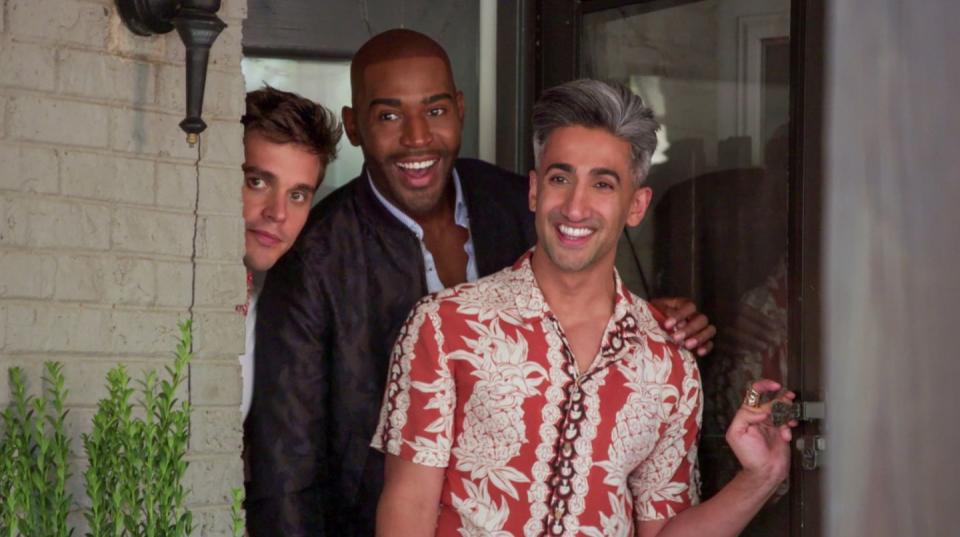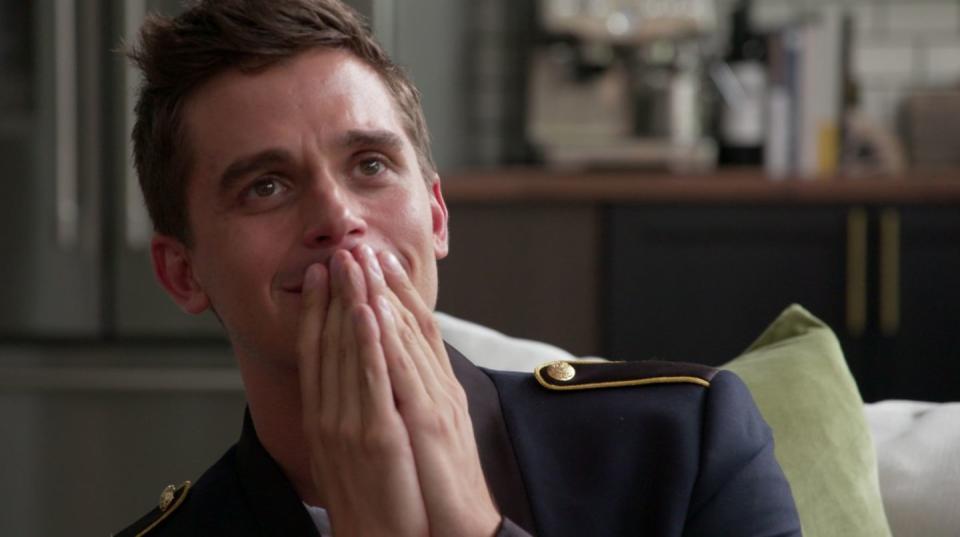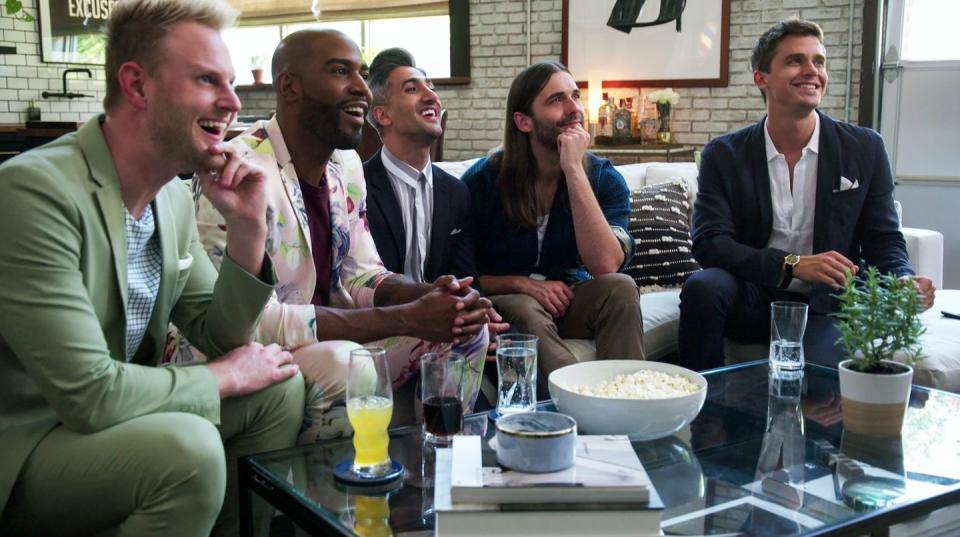Between season 5 and We're in Japan!, is there such a thing as too much Queer Eye?

It's been over a year since the Queer Eye reboot came into our lives and with four seasons of the show (French) tucked under their belt, the Fab Five are now more popular than ever.
Following their three Emmy wins in 2018, the boys are up for six more nominations this year and they even drank tea with Taylor Swift in her latest music video. Clearly then, devoted fans love Queer Eye even more than Antoni loves avocados, but in the words of Tay Tay herself, do they need to calm down?
In just 18 months, the Fab Five have already filmed four seasons of Queer Eye plus a special set in the Australian town of Yass. On top of that, season five has already begun filming and there are also four Tokyo episodes coming our way too.
Back when Queer Eye first debuted on Netflix, Buzzfeed described it as "The most empowering and positive show on TV right now," but with the release of thirty-three episodes in such a short space of time, is this too much of a good thing?

Aside from concerns over a potential avocado shortage, the biggest issue here is that Netflix risks diluting the impact of Queer Eye by flooding their service with too many episodes at once.
Don't get us wrong. The Fab Five have helped far more people than just the "heroes" they make over, inspiring audiences worldwide to reevaluate their lives and discover self-worth.
I’ve been in a life rut lately. So today, I stayed home from work and treated myself to the new season of #QueerEye. I cried the entire time 😭😭😭. And now I feel like I can conquer the world. 💪🏻💪🏻💪🏻Season 4 and it STILL does not disappoint. 🥰🥰🥰 pic.twitter.com/W43xOB1F09
— Susan Lee | 이선영 (@susanleewrites) July 19, 2019
But if Netflix keep dropping seasons this fast, they run the risk of losing what made the show special in the first place. Every episode of Queer Eye follows a very specific formula and while the Fab Five's charisma keeps things interesting, familiarity could easily breed contempt if the showrunners aren't careful.
After all, there's only so many times Tan can recommend a French Tuck before fans consider tucking into a new show entirely.
To its credit, newer episodes of Queer Eye have tried to inject some much-needed diversity into the show, both in terms of the format and the subjects they make over.
For example, season four cuts down on the awkward dance segues in favour of surreal tip segments like the one where Antoni sips from a miniature martini glass.
As time's gone on, it's also become more and more clear that Queer Eye is no longer just for the straight guy thanks to a wider range of "heroes" who represent various walks of life.
Season two mixed things up by introducing trans and female "heroes", and this willingness to deviate from straight, middle-aged men in need of a shave certainly works in the show's favour.

As Antoni pointed out to Digital Spy last year, "Everybody needs our help, not just straight white dudes."
Subsequent seasons continued this pattern, diversifying the subjects who appear on the show, but with plenty more episodes heading our way in quick succession, even that might not prevent boredom from sinking in.
One solution for this could be to take longer breaks between each season. Although it might not feel like that's going to happen anytime soon, it's entirely possible that the growing success of the Fab Five could soon force that to be the case.
All five members are now involved in various side-projects of their own, which could potentially lead to schedule conflicts and therefore a longer wait between seasons. Tan France already had to skip shooting some scenes for Taylor Swift's video because he was tied up filming a new Netflix show called Next in Fashion. If that takes off, then Queer Eye may soon no longer be his biggest priority.
A post shared by T A N . F R A N C E (@tanfrance) on Jun 17, 2019 at 6:22am PDT
Either way, the key to Queer Eye's future lies not just with diversity, but with the kind of diversity that challenges both viewers and the Fab Five alike.
Season four introduced an impressive range of likeable "heroes", including a lonely hoarder and a disability-rights activist, but it's getting to the point where they're almost too likeable now.
Earlier encounters in season one confronted the Queer Eye team with issues of race and religion which had a visible impact on their lives, most notably when Bobby Berk revealed his struggles with Christianity and Karamo Brown discussed Black Lives Matter with a police officer.
At a time of extreme political unrest and division in America, these conversations felt crucial and helped Queer Eye transcend the usual limitations of makeover TV. Unfortunately, the show has quickly evolved into something less confrontational and therefore 'safer'.
As Cosmopolitan pointed out when season four hit Netflix, "both the heroes and the Fab Five are all on the same side here, which means the episodes are missing the tension that made season one so powerful".

If Netflix is going to keep pumping out new seasons of Queer Eye at such a rate then it's no longer enough to simply change the lives of individual people for the better. To stay fresh and continue making an impact, the show must return to its roots and include some "heroes" who challenge the Fab Five, sparking the kind of conversations that can change the lives of many people for the better.
Of course, that's a lot of pressure for just one reality show to shoulder, but as Tan himself said in the very first episode, "The original show was fighting for tolerance. Our fight is for acceptance." Visibility is hugely important, but the conversations that surround this are even more important still.
If future instalments of Queer Eye can remember that and keep up the good fight, then we'll eagerly embrace new seasons, just like the boys embrace their inspiring "heroes".
Queer Eye seasons 1-4 are now available on Netflix.
Want up-to-the-minute entertainment news and features? Just hit 'Like' on our Digital Spy Facebook page and 'Follow' on our @digitalspy Instagram and Twitter account.
You Might Also Like

